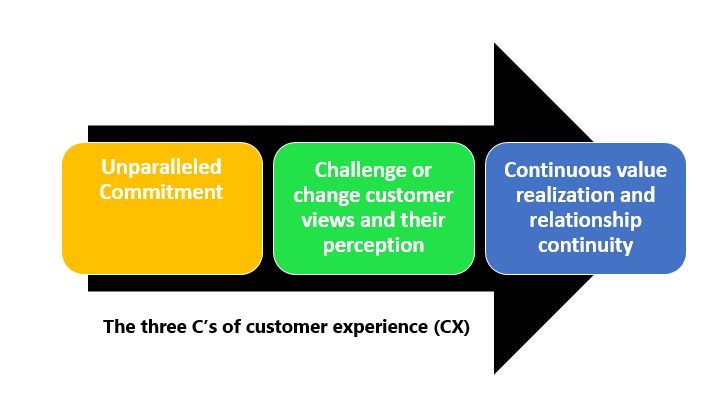
How can we tell if a company is delivering a great customer experience? Or a proactive experience? Here are the three C’s organizations should be doing to drive loyalty and lifelong customers.
It is necessary to remember the goal and purpose we want to accomplish. Why? Because every time we touch a customer’s life, we either enrich it or diminish it.
A customer experience is not just about the user experience or making them happy at their moment’s needs. It is also about managing uncertainty, collaborating on future goals, and planning for growth. Hence, driving success is more important than fixing and correcting business problems.
How can we tell if a company is delivering a great customer experience? Or a proactive experience? Here are the three C’s they should be doing.
#1 Unparalleled Commitment
Back in the day, customers bought something, and you end up supporting them. There wasn’t this concept of consistent value from the system (product or service). People are stuck as the cost of replacing a vendor is so expensive.
When SaaS came around, you didn’t just solve problems, but you provide intrinsic value that customers expect and demand. Customers now have the option to decide (to their advantage) whether they want to continue partnering with you or not.
With these changes, organizations have begun to adjust their efforts on how to make an impact on their customers. Previously, it was only suitable for large organizations or businesses that had the resources to support customers.
But now, regardless of the company’s size and industry, they need to make sure they are part of the success of their customers. They also learn from partnerships that allow or empower them to shift focus, change priorities, and overcome external forces.
What caused this changed? Aside from the brand impact, businesses found that customer trust became a voting force to determine their loyalty if they did not fulfill or deliver on their promises.
Hence, business commitment and dedication have shifted to helping customers find more success in the relationship. Now, they need to track customers’ progress, assess the effectiveness of CX programs, provide ample opportunities, re-adjust their success metrics, not just improving touchpoint insights and channels.
Commitment is about reducing bad or poor customer experiences and making appropriate changes or critical improvements. That is the difference between achieving success and making it happen.
# 2 Challenge or change customer views and their perception
The customer relationship does not begin or end based on the product’s capabilities, functionalities, or what it can do. Instead, it starts with trusting how the service or product can change or solve their business challenges.
It is a continuous evaluation process that takes place every single day. Customers can stay with organizations as long as they receive the value and service they think they need or provide the success their business needs.
If the organization helps customers change their views and perception, it reflects on how they do business. In other words, they recognize the delivery of businesses’ promises and reinforcing brand values and purposes. That involves value gain through onboarding, training, implementation, value planning, and on-ongoing collaboration.
While most strategies are supposed to improve or maximize the competitive advantage and business value — they cannot help drive growth, success, and improve the service — without influencing or challenging customers to do or implement the changes required.
You will better understand if your customer experience program is successful when customers help you design and implement these strategies that benefit their customers and their business.
In the past, when customers buy something in the organization, the sales team automatically becomes a POC (point of contact). Customers realize that salespeople are moving (at different companies) all the time.
The difference now business ensures that customers have the consistency of the business relationship. That means someone can plan year-round on their projects, conduct a full business review (evaluation), and be accountable for their long-term success, which customers did not see in the previous business model.
Organizations must ensure that customers get the value promises them through the following process:
- Follow up after purchase is made. It is imperative, especially in the first 30 or 60 days. It is the time when customers learn about business services and products.
- Quickly onboard and train customers. They must gather customer feedback at each stage of their journey. Recognize customer efforts along the way. They should also identify, analyze, and take appropriate steps to understand customer predisposition.
- Develop an effective communication (or engagement) process to keep it fresh and engaging. Understand and bring new insights into the relationship that customers can relate to and appreciate.
- Collaborate with customers. Ask customers to become design partners or if they will be interested in authoring or writing articles together.
- Invite customers to talk to their team about how they use the product and how they benefit from it. Perhaps, doing a webinar or a case study testimonials.
- Collaborate with other departments at the strategic level to ensure that the strategic plan gets implemented and executed thoroughly.
Creating experiences that are effective and efficient strengthens trust and confidence in the business. It is also paramount to fixing and correcting business problems.
Failure to follow the three C’s can result in increased customer churn and customer dissatisfaction. On the other hand, in doing so, each customer experience becomes simple, frictionless, and personalized — regardless of the channels — they choose to engage.

&v=024)


Mga Komento